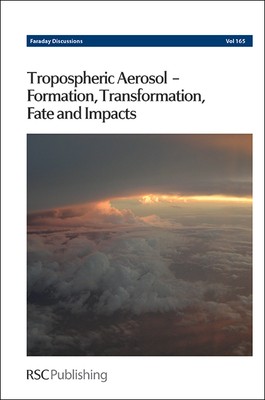
- We will send in 10–14 business days.
- Publisher: Royal Society of Chemistry
- Year: 2013
- Pages: 400
- ISBN-10: 1849736928
- ISBN-13: 9781849736923
- Format: 16.4 x 23.7 x 3.9 cm, hardcover
- Language: English
- SAVE -10% with code: EXTRA
Tropospheric Aerosol-Formation, Transformation, Fate and Impacts (e-book) (used book) | bookbook.eu
Reviews
Description
Suspended particulate material in the atmosphere gives rise to a number of poorly determined problems of major current concern. Direct and indirect radiative forcing (the ability of aerosol particles to affect the Earth’s radiation budget) each carries larger uncertainties than all other agents of climate change. Furthermore, there are significant challenges associated with the uncertainties of the impacts of particulate material on air quality and human health. A significant contributor to these uncertainties is the vast heterogeneity in the distribution of aerosols by virtue of their disparate sources (both primary and secondary) and transformations in the moist oxidising atmosphere. The complexity of aerosol precursors and variability in the oxidising environment leads to a highly variable loading of particles of widely ranging size, age and property. Discussions will capture a number of emerging frameworks aiming to integrate our theoretical or empirical understanding of the atmospheric aerosol, able to capture behaviour of physico-chemical aspects to various degrees and for a variety of applications at a range of complexity.
EXTRA 10 % discount with code: EXTRA
The promotion ends in 20d.22:13:05
The discount code is valid when purchasing from 10 €. Discounts do not stack.
- Publisher: Royal Society of Chemistry
- Year: 2013
- Pages: 400
- ISBN-10: 1849736928
- ISBN-13: 9781849736923
- Format: 16.4 x 23.7 x 3.9 cm, hardcover
- Language: English English
Suspended particulate material in the atmosphere gives rise to a number of poorly determined problems of major current concern. Direct and indirect radiative forcing (the ability of aerosol particles to affect the Earth’s radiation budget) each carries larger uncertainties than all other agents of climate change. Furthermore, there are significant challenges associated with the uncertainties of the impacts of particulate material on air quality and human health. A significant contributor to these uncertainties is the vast heterogeneity in the distribution of aerosols by virtue of their disparate sources (both primary and secondary) and transformations in the moist oxidising atmosphere. The complexity of aerosol precursors and variability in the oxidising environment leads to a highly variable loading of particles of widely ranging size, age and property. Discussions will capture a number of emerging frameworks aiming to integrate our theoretical or empirical understanding of the atmospheric aerosol, able to capture behaviour of physico-chemical aspects to various degrees and for a variety of applications at a range of complexity.


Reviews